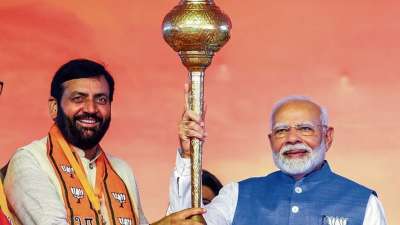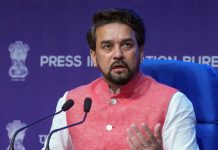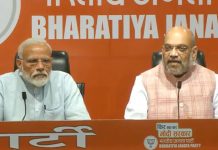
New Delhi : The biggest reason for Bharatiya Janata Party’s victory in Haryana was learning a lesson from the setback it received in Lok Sabha polls. Within months of losing its ground in Haryana during Lok Sabha elections, the BJP was able to make a remarkable turnaround in the state’s Legislative Assembly polls. All this could happen as the saffron leadership learnt from its mistakes made during the general elections, ensuring that the party kept its hold on the crucial state for a third consecutive term.
BJP’s biggest step in the direction was to mend relations with its ideological parent, the Rashtriya Swayamsevak Sangh. The outreach by the BJP ensured that the RSS’ cadre took over 16,000 meetings and prepared a fertile ground for a return of the saffron unit’s government in the state for an unprecedented third term.
The BJP leadership has been on an edge ever since its less than adequate performance in recent Lok Sabha polls. The relationship between the two saffron outfits was strained ever since BJP chief JP Nadda had courted controversy and upset the top leadership of the RSS after certain unwarranted remarks during the peak electoral campaign during general elections.
As part of its electoral strategy, BJP’s central leadership did not allow the internal sabotage in Haryana, an issue that the party had faced in Uttar Pradesh during recent Lok Sabha polls.
While Chief Minister Nayab Singh Saini was himself seen to be working hard, BJP’s giving its due to OBC vote bank ensured that the community wholeheartedly backed the party.
While other parties, especially Congress, were openly wooing Jat votes in the state, the BJP tried to bring non-Jat communities under its influence. At the same time the saffron unit didn’t antagonize the influential Jat community and roped in caste leaders like Satish Poonia to send out positive messaging to the community.
The BJP took full advantage of the shortcomings of the Congress in its internal conflicts, its excessive dependence on Jat votes and overlooking of other communities, especially Dalits. Congress’ non-engagement with INDIA bloc allies like the Samajwadi Party and the Aam Aadmi Party was also brought to the fore.
These shortcomings of the Congress in Haryana were given due consideration by BJP’s top leadership in making a seat-wise strategy and fielding candidates that could consolidate BJP’s core voters and ensure victory for the party’s candidates.
The BJP also ensured that the state’s electorate was reminded of “kharchi-parchi” an inference towards Congress rule in the state when all jobs and works were awarded allegedly by paying bribes or using influence. The saffron leadership also ensured that involvement of former Chief Minister Manohar Lal Khattar during the campaign process was kept minimal so as not to flare up anti-incumbency feelings again.
The spectacular electoral comeback by the BJP, from losing half of the Lok Sabha seats in the state to bouncing back within a few months, was due to smart political strategies planned and implemented by saffron leadership. Ensuring an unprecedented third term for the party and giving it a much-needed boost after the Lok Sabha polls outcome.













